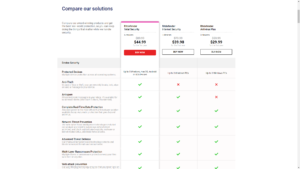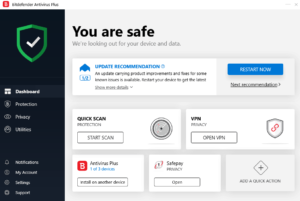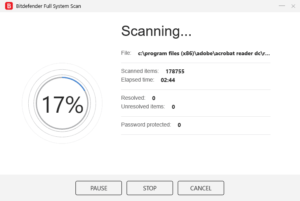Simple Yet Efficient Webcam Security Tips to Deter Hackers (Visual Illustrations)
2021-12-23 08:20

As cybersecurity is becoming more and more essential and sophisticated, especially for journalists and HRDs seeking to protect the privacy of their data and their resources, hacking techniques have been developing as well. In the following articles, JSC provides you with some of the most important steps to follow in order to maintain the highest possible securty levels for your webcams.
9 simple webcam security tips to deter hackers
You might have heard that hackers can access your webcam. In the age of the Internet of Things — where internet-enabled devices connect to each other on your wireless network — that’s a pretty scary notion.
It’s easier than you might think to inadvertently install Trojan horse malware on your device. You might think you’re downloading a legitimate program, or clicking on a harmless link. Once the malware infects your device, it can then install remote desktop software — meaning, hackers could get control of your device, including your webcam.
Not only might hackers be looking through the webcam on your computer or tablet, but they might also be watching through your home security system or any other device on your network with a camera.
Think about it — how far are you from a camera right now? Just about everything has a camera on it these days. So how can you help protect yourself against webcam hacking? Here are nine ways to improve your webcam security.
1. Check to make sure your software is up to date
Keep your software up to date. This helps patch vulnerabilities in your software that could allow hackers access to your device.
Updating your software is pretty easy on Mac and PC devices, and iOS and Android. Here’s an example of how to update — in this case, for Mac. But check out the links below to get complete instructions for updating all of your devices.
How to update software on Mac (for MacOS Catalina)
- Choose System Preferences from the Apple menu.
- Click Software Update to check for updates.
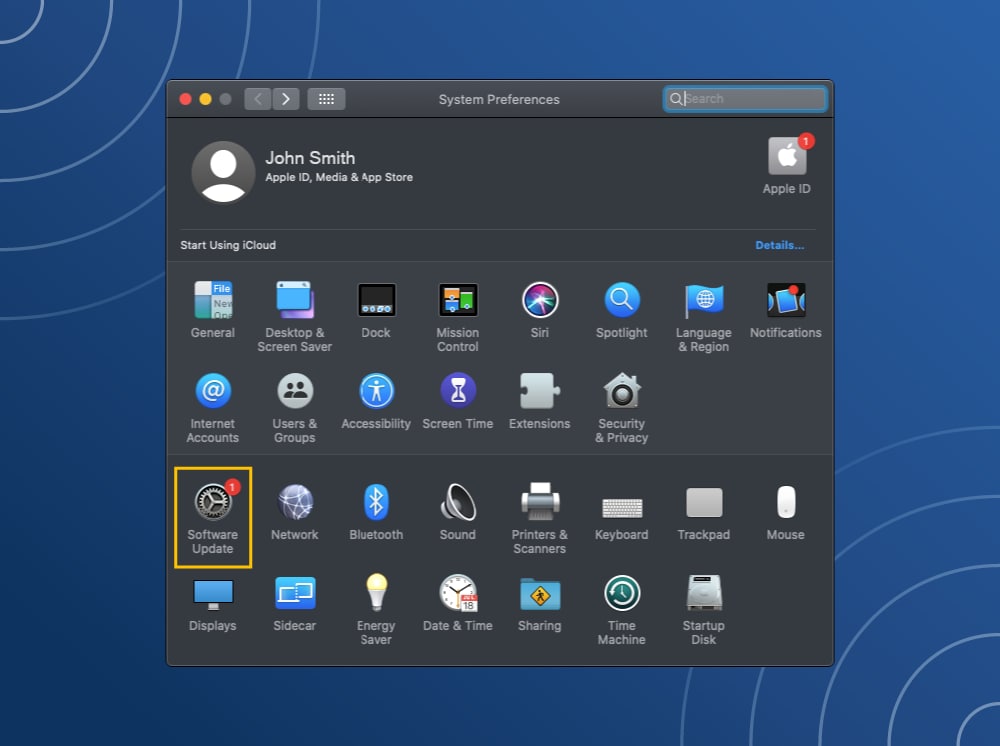
Click the Update Now button to install all available updates or click More Info to see more details about each update.
3. Consider selecting “Automatically keep my Mac up to date” to install future MacOS updates. This also applies to apps downloaded from the App Store.
Detailed instructions are available on the Apple website.
How to update software on a PC
1. Click Start, navigate to Settings and click Update & Security.
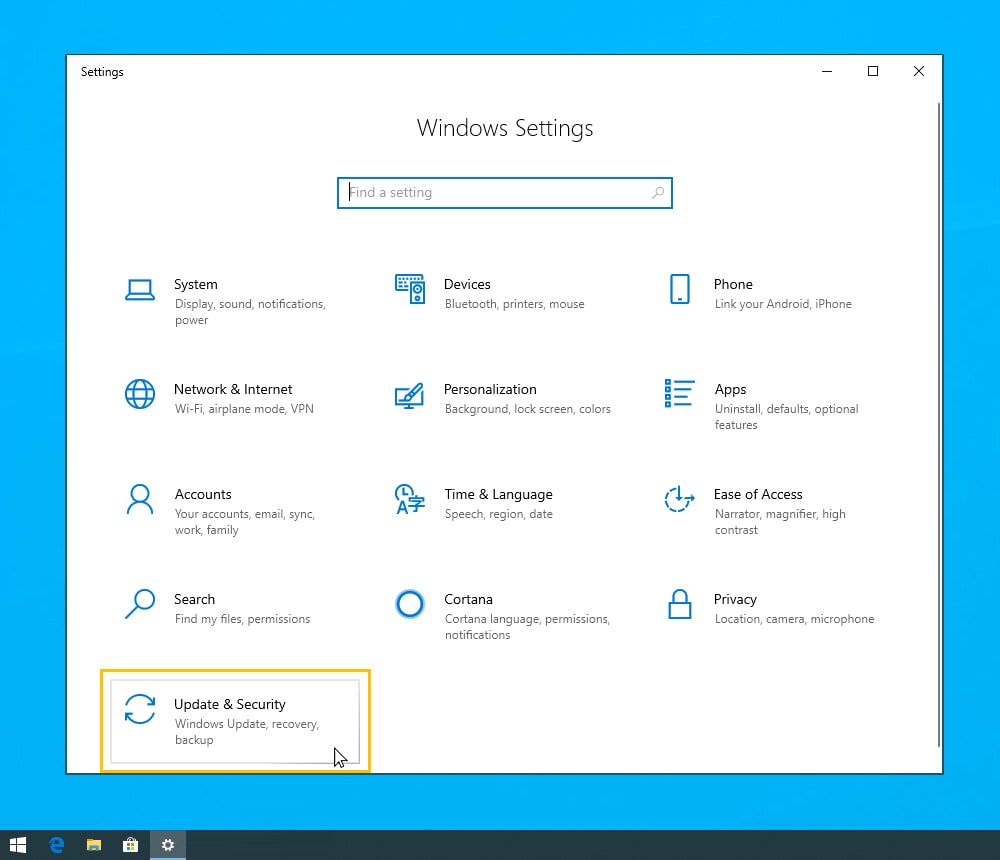
2. Click Windows Update, then click Change active hours.
3. Set your preferred start and end times for active hours, then save.
Detailed instructions are available on the Windows website.
How to update software on Apple iPhone, iPad or iPod touch
- Open Settings, navigate to the General menu and select Software Update.
- Select Download and Install.
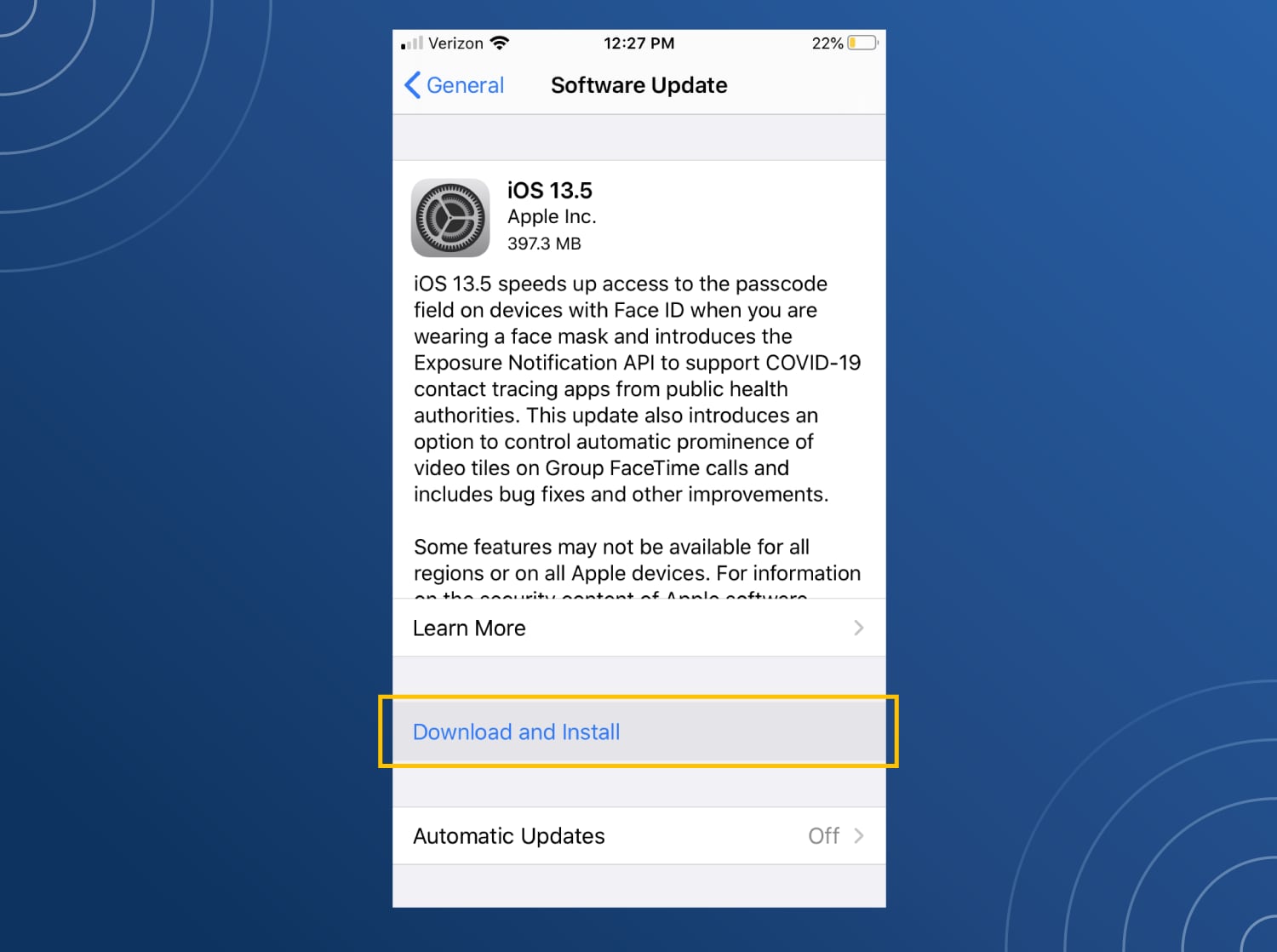
3. Select Install (or select Later if you prefer to install the update later).
Detailed instructions are available on the Apple website.
How to update software on Android
- Open Google Play Store, navigate to the menu and select My Apps & Games.
- Locate apps labeled Update.
- Select Update.
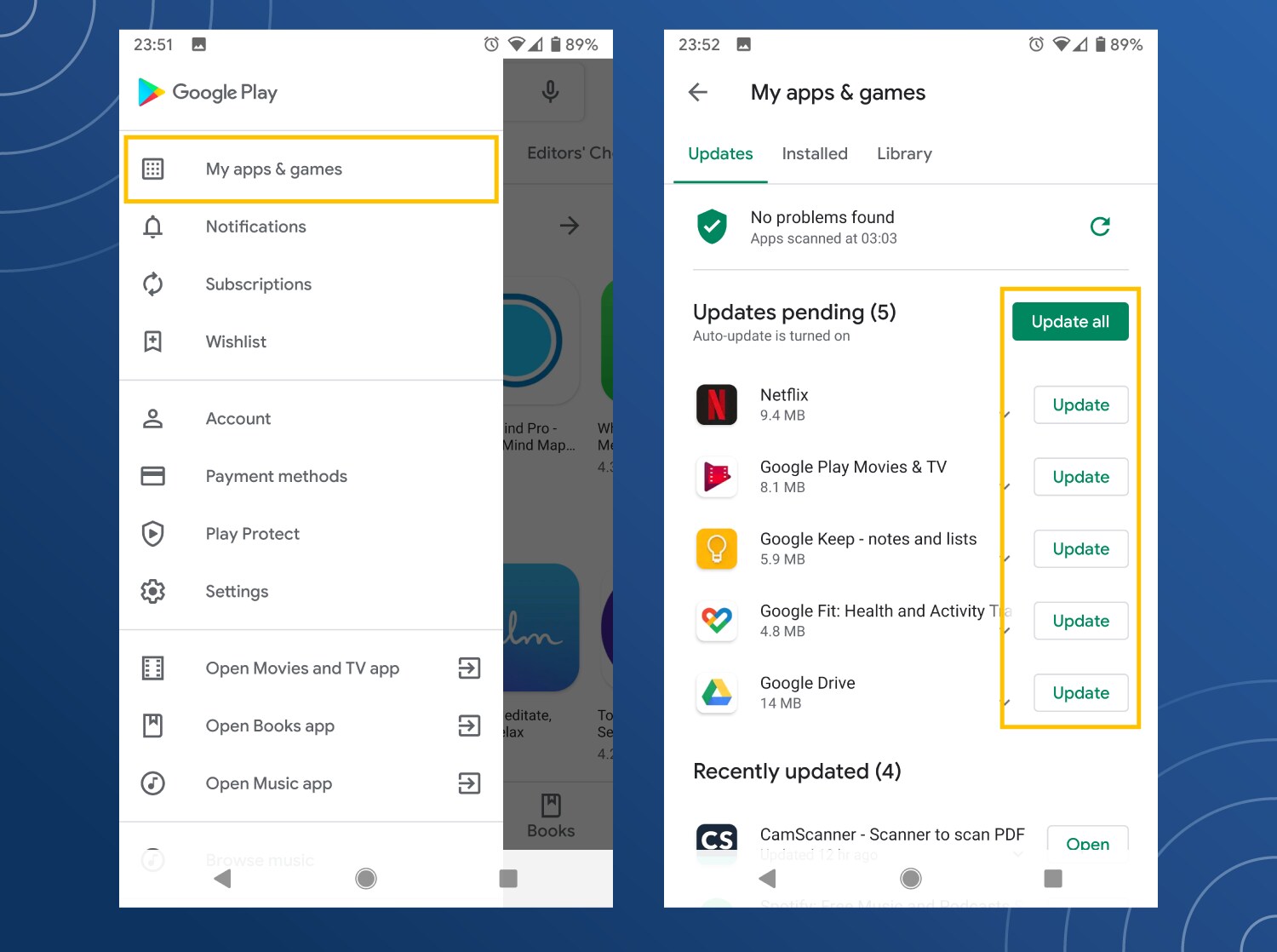
Detailed instructions are available on the Google support.
It’s easy to ignore those pop-up alerts that remind you it’s time to update your software. But don’t do that. Remember, your goal is to keep cybersnoops out of your devices.
And that includes minimizing the risk of anyone taking control of your webcam.
2. Use a firewall to lock down your network
A firewall is a network security system. It provides a wall of defense by monitoring traffic to and from your network. In short, it can help keep the bad guys out.
Your computer probably comes with a firewall, which will prevent unauthorized access to your computer. Keep in mind, most firewalls need to be turned on. If you’ve never enabled your firewall, it’s a good idea to do it now.
How to turn on your firewall on a Mac
Apple outlines the steps to take to turn on a Mac firewall. (This should work in OS X v10.6 and later.)
- Choose System Preferences from the Apple menu.
- Click Security or Security & Privacy.
- Click the Firewall tab.
- Unlock the pane by clicking the lock in the lower-left corner and enter the administrator username and password.
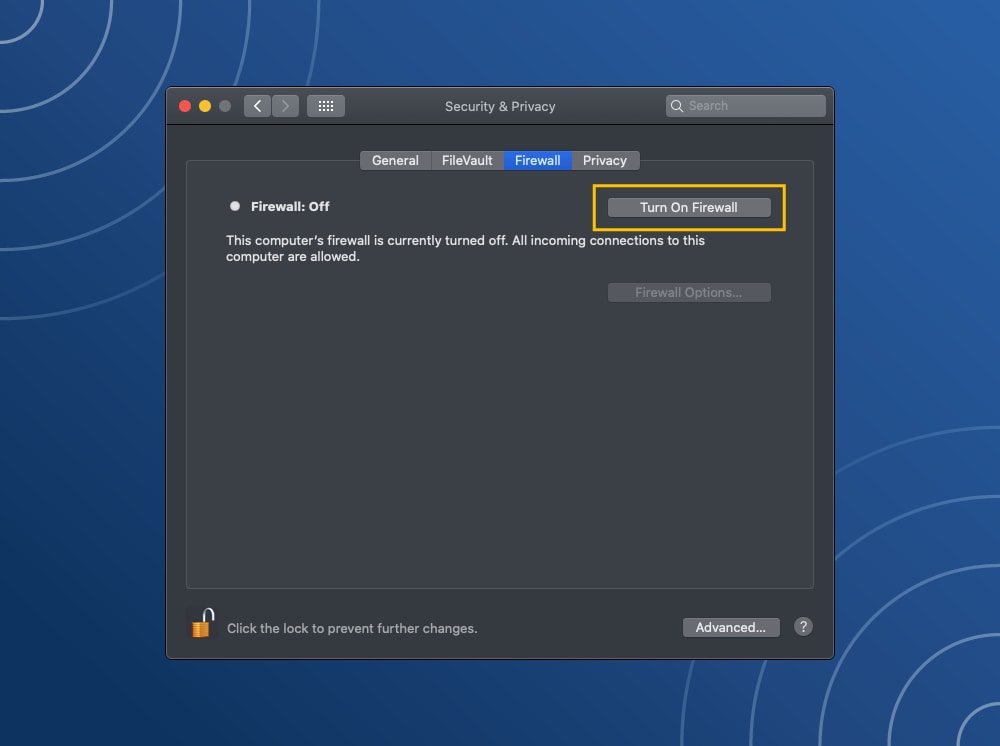
5. Click Turn On Firewall or Start to enable the firewall.
6. Click Advanced to customize the firewall configuration.
You can find other detailed instructions on the Apple website.
How to turn on your firewall on a PC
Do you use a PC? Microsoft has instructions to turn Windows Defender Firewall on or off. Here’s how:
- Select the Start button.
- Select Settings, then Update & Security, then Windows Security, then Firewall and network protection.
- Choose a network profile.
- Under Windows Defender Firewall, switch the setting to On or Off.
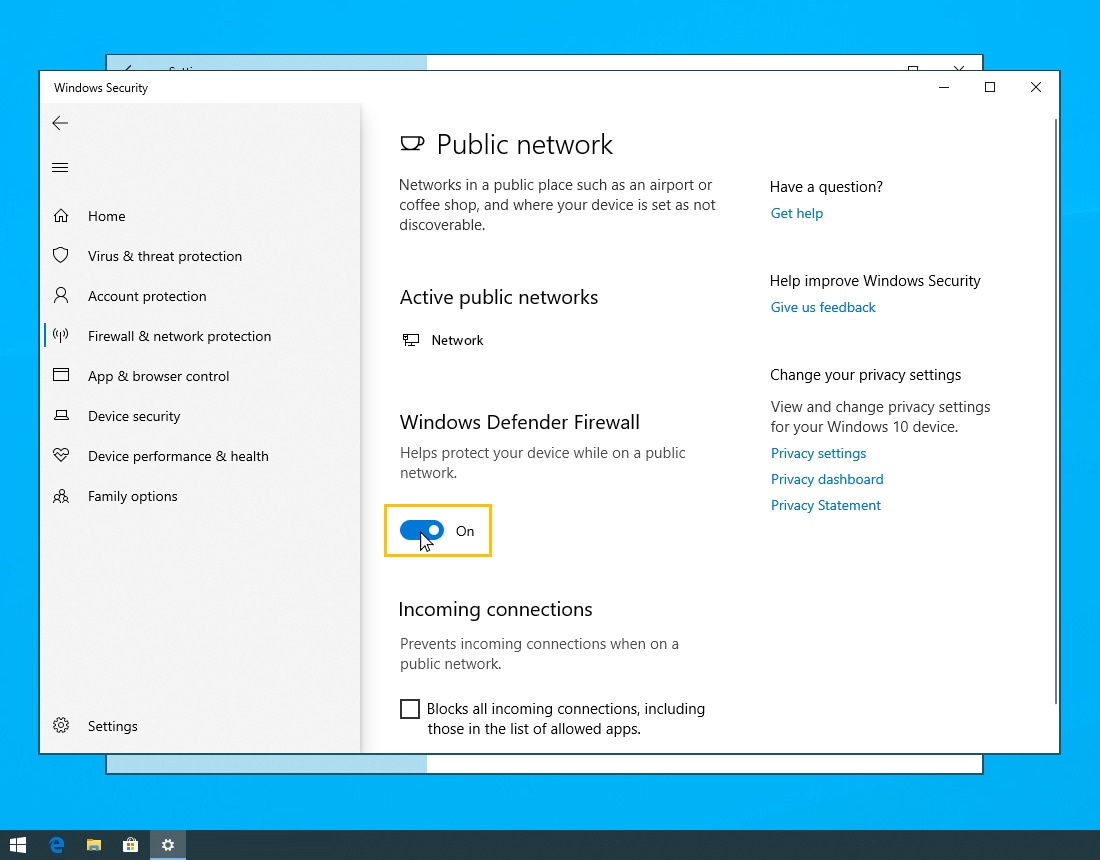
Microsoft offers other details online, plus this reminder: “Turning off Windows Defender Firewall could make your device (and network, if you have one) more vulnerable to unauthorized access.”
3. Secure your Wi-Fi
Hackers may target your home wireless router to gain access to your network. That means they might access things like your emails, social media or bank accounts that you’re logged in to, personal schedule, and webcam.
Here are a few basic tips to help protect against that.
- Create a name and password for your router in Security Settings, then select a type of encryption (more about his in No. 2 below).
Tip: Avoid naming your router something that can easily be associated with you, such as your name or address. Also, make sure you create a complex password such as one using a random string of letters, numerals, and special characters. - Choose the most secure and recent form of encryption available. That’s probably Wi-Fi Protected Access 2, also known as WPA2.
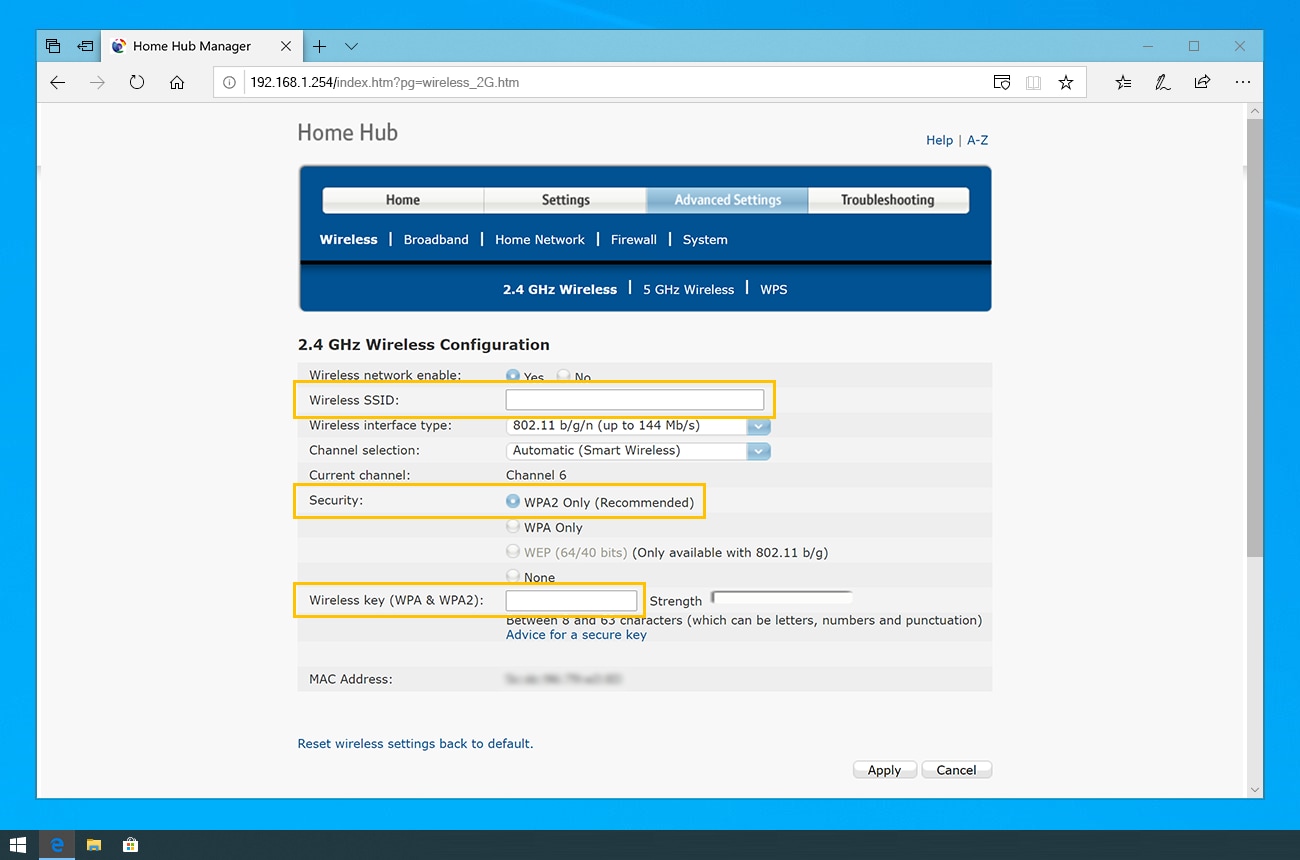
3. Be sure to save the updated information when prompted.
4. Avoid all suspicious links
Cybercriminals can gain control over your device — including your webcam — by tricking you into installing malware.
That’s why you should never click on suspicious links in emails or download files from people you don’t know. This is one of the most common ways that hackers gain access to your devices.
What’s a smart defense? Only download attachments and click on links in emails from people that you trust. Even then, if something looks suspicious, call or text them to find out if it’s legitimate. You can also search a website link to see how safe it is.
5. Don’t chat with strangers online
A cybercriminal might chat with you online to get your personal information or trick you into downloading malware that compromises your webcam.
Here are a few dos and don’ts to consider if you decide to chat with a stranger.
- Don’t share anything that might be used to gain access to financial accounts, lead to identity theft, and enable other types of danger or fraud.
- Don’t overshare. Avoid providing personal details that someone could gather in an attempt to break your passwords. Examples include date of birth, pet names, your high school or its mascot, or any of the other types of random information that could be used to crack your security questions or that you might use in passwords.
- Avoid sharing a picture of yourself, your home, or anything that might lead a stranger to you.
6. Cover or unplug your webcam
If your camera has an indicator light, and it goes on — and you didn’t do it — it’s a likely sign your webcam has been hacked.
And if the indicator light doesn’t go on? Keep in mind that hackers can sometimes disable the light.
Indicator light aside, hackers have had real-life success hijacking webcams. For instance, hackers have used webcams to capture compromising images of unknowing victims and, in some case, have reportedly demanded ransom in exchange for not distributing the image or posting them on the web.
Some people, including Facebook CEO Mark Zuckerberg, opt for at least one low-tech solution: covering the device’s camera with a sticker or tape. You can also purchase covers online that are designed to attach to your webcam.
7. Get a virtual private network (VPN)
Security software does a lot of the work in blocking malware that could lead to someone remotely taking control of your webcam — but it’s smart to add another layer of security.
That’s where a virtual private network comes in.
A VPN can increase your online privacy and anonymity by creating a secured, private network from any internet connection you access. That could be in your home or on a public Wi-Fi network.
Public Wi-Fi networks can be especially vulnerable to hacking, but a VPN helps protect the data you send and receive while accessing public networks.
8. Use trusted tech support
Unethical technicians could install remote-access programs when your computer is in the shop. Make sure you trust your tech. The same goes for remote support. Giving remote control of your computer could make you vulnerable to having your webcam hijacked. Always password protect your personal data before allowing a technician to access your computer, and ensure that you’ve read the technician’s privacy policy first. After their work is completed, it’s also a good idea to change the password to any program or system that the technician had remote access to, for an added layer of security.
9. Install and run security software on your devices
You might associate “connectedness” with the Internet of Things, or IoT, devices in your home. Your security software also offers a kind of connectedness — a lot of the features work together to help protect you against webcam hacking and other threats.
Free security software is available, but it often lacks a multi-layered defense against cyberthreats and it often can’t keep up with new threats as they emerge.
Subscription software helps defend against ransomware, viruses, spyware, malware, and other online threats. It also helps protect your home network with a smart firewall and helps you manage protection for all your devices.
How to check if your webcam is hacked
There are two steps you can take to help determine if your webcam is hacked.
1. Check your webcam light. If your light turns on while you are not using your webcam, there’s a chance that your webcam is hacked. However, another application running on your computer may have turned on the light, so ensure that all other applications are closed first.
However, just because your webcam light isn’t turned on doesn’t mean your webcam hasn’t been hacked. Sometimes, hackers can disable your light. Keep in mind, too, that it’s sometimes possible to turn off your webcam light in settings.
2. Run a security scan. By running a scan on your device to determine if your computer is infected, you can identify viruses or other security threats quickly and prevent their spread. For Windows 10 computers, go to Settings and find the Updates & Security tab, then click on Scan Now. You can also run a scan using your security software or downloading a reputable antivirus application.
At one time or another, you’ve probably had that feeling you’re being watched — even if it’s just you and your webcam.
That’s why it’s smart to know about webcam security. And that starts with learning how to secure your webcam and help prevent webcam hacking.
Sometimes it’s nice to be alone.
7 Webcam Security Tips: How to Secure Your Webcam in 2021
You’ve probably seen movies where computer hackers remotely spy on unsuspecting victims by hacking into the target’s webcam on their laptop or phone. As it turns out, thousands of people are regularly being monitored whether they realize it or not, as it doesn’t take much to compromise your webcam security.
Whether you know it or not, someone might be watching you from the other side of the webcam built into your computer, smartphone or TV. Hackers spying on you through your webcam isn’t something that just happens in movies — webcam security threats such as spying can compromise anyone’s privacy.
Key Takeaways:
- Any webcam connected to the internet can be accessed by malicious hackers and the content shared online.
- Practicing good cybersecurity habits is key to protecting your privacy in general and preventing webcam spying in particular.
- If all else fails, cover your webcam.
In this article we’ll show you how to find out if your webcam has been hacked and what you can do to stop others from spying on you. The first thing to keep in mind is that no amount of fancy security tools will keep you safe unless you choose to routinely practice good cybersecurity habits, as that will help you avoid the problem to begin with.
-
09/17/2021 Facts checked
Updated info on webcam statistics, expanded the list of tips, and added a step-by-step guide for using Bitdefender.
Webcam Security: How Much of a Problem Is It?
Researchers at Wizcase discovered the live video feeds of 15,000 exposed webcams online, available for anyone with an internet connection to view. Thousands of these webcam feeds peer inside the private homes of ordinary people who appear to be oblivious to the fact that their electronic devices are broadcasting their lives to the whole world.
Other feeds show live video from security cameras at stores, parking lots, gyms, museums, hotels, places of worship and many other places. This sampling of several thousand webcams is only the tip of the iceberg. What this finding reveals is that any internet-connected camera has the potential to be controlled by a remote hacker and distributed freely online.
7 Webcam Security Tips
Malware is the primary vehicle of compromise that allows hackers to peer through the lens of your device, so the issue is fundamentally a matter of shoring up your device’s security defenses against malware threats, vulnerabilities, phishing emails and other common dangers of the web.
As always, your personal cybersecurity habits make up the first line of defense. A good starting place would be to avoid clicking links in suspicious emails, as webcam hackers commonly rely on phishing emails to infiltrate your system, which we will see below.
We’ll show you how to recognize the signs of a webcam security compromise and how to prevent malicious actors from spying on everything you do.
1. Physically Cover up the Camera
The first thing you should do to prevent spying is to cover up the camera itself. There is no way to bypass a covering placed over the lens itself, no matter how sophisticated the hacker’s malware might be.
Placing a piece of electrical tape over the lens is an inexpensive solution commonly used to thwart webcam spies, but it could leave adhesive residue on the lens that could get in the way when you do want to use the webcam. It only costs a dollar or two to get a plastic webcam cover that slides over your webcam while not in use.
2. Don’t Trust the Indicator Light
An LED light will turn on beside your webcam’s lens whenever the video recording begins. If you didn’t click “record” and yet the light turns on anyway, someone may be watching you.
However, don’t get too comfortable even if the light stays off when you stop recording. Webcam hackers are usually clever enough to turn the light off while capturing your private activities. If someone takes control of your webcam, then they will probably have just as much power over the webcam’s ancillary functions as the camera itself, such as the indicator light and the audio recording.
3. Beware Your Microphone
Keep in mind that a webcam hacker could still record audio even if they can’t lay eyes on you. Preventing unauthorized audio recording is less straightforward than covering your webcam, so you will have to disable the microphone in your device’s settings. If you use Windows 10, navigate to the Device Manager to locate and disable the webcam and microphone manually.
4. Check Your App Permissions
Sometimes the webcam’s settings can be altered by apps and browser extensions that have permission to access the webcam, and may lead to the indicator light turning on when you’re not recording. Most operating systems will let you deny all apps’ permission to access your webcam. Be aware that some apps may not work after revoking permission.
5. Install Updates Automatically and Regularly
Practicing good cybersecurity habits is the first thing you need to do to secure your privacy. Automatically installing regular updates will keep your system fortified against the new vulnerabilities and malware threats that pop up every day.
6. Install Security Software
Regular system updates come hand in hand with installing reliable security software. There is plenty of security software available online for free, but free solutions usually can’t keep up with threats emerging on a daily basis as well as a good subscription service.
If you’re on the lookout for a trustworthy security software, read our review of Bitdefender here. Bitdefender is a great choice not only for its robust protection against most forms of malware, but also because the software includes a webcam protection feature.
7. Use a VPN
Ideally, it’s better to prevent the security breach from happening in the first place. Keeping your internet connection private with a VPN is one way to prevent your internet service provider and malicious hackers from spying on everything you do.
A VPN, or virtual private network, is a privacy tool designed to encrypt your traffic and route it through an intermediary server in another part of the world. Our top VPN is ExpressVPN, and you can read our full ExpressVPN review here.
How To Find Out if Your Camera Is Hacked
It’s not always clear when someone else gains access to your device. If your antivirus software doesn’t catch anything but you still have the suspicion that someone else has access to your webcam, there are a few things you can do to find out if you’re really private.
- Check your files: If you’re worried that you’re being recorded, navigate to the folder where your webcam recordings are stored. If you find videos you don’t remember recording in there, then you either hit the record button accidentally or have succumbed to a webcam hack.
- Scan for malware: A simple malware scan should reveal any malicious programs lurking somewhere in your system and prevent it from spreading.
- Look for unusual settings: Your webcam may be hacked if you find odd changes to your webcam’s settings that you didn’t make yourself. The hacker’s malware may have changed the settings to help them control the webcam and covertly store video recordings.
- Monitor your network traffic: If you close all of your apps and still see an unusual amount of data usage, that may indicate the presence of malware on your system.
- You may have received a message from a hacker: Cybercriminals don’t always keep their activities hidden, especially when they can send a threatening message to scare their victims into paying a ransom. A common form of extortion known as “sextortion” involves secretly recording the target with the webcam and later threatening to release the video to the public unless a ransom is paid.
Sextortion emails are usually empty threats where no such video recording exists, but occasionally a hacker will record something the target doesn’t want shown.
What to Do if Your Webcam Is Hacked
Don’t worry if you find out that someone’s taken control of your webcam — just cover the lens while you launch a reliable antivirus program.
Below, we’ll show you how to use Bitdefender to remove the malware that helped your webcam spy invade your privacy.
How to Remove Malware Using Bitdefender
Bitdefender is one of our most highly reviewed antivirus programs. It’s packed with loads of security features like file encryption, ransomware protection and an anti-theft tool, just to name a few. Follow these steps to kick that webcam spy out of your system.
- Install Bitdefender
This software comes with several paid plans as well as a free version. Once you purchase a plan, download and install Bitdefender.

- Start a Quick Scan or System Scan
Choose to do a quick scan or a system scan. The former is a shorter malware scan while the latter is a longer, deeper scan for malware.

- Scan for Malware
Scan for malware, and Bitdefender will display the total number of files scanned and if any threats were detected.

Final Thoughts: Security for Webcams
Webcam security probably isn’t the first thing that comes to mind when protecting your device from cyber threats, but overlooking webcam security comes at a great cost. Malware is the primary weapon hackers use to take over a device’s webcam, so the solution to keep spies out goes much deeper than simply taping over your webcam lens.
Fundamentally, webcam security compromise is a malware problem, and it’s but one of the many problems that will be solved once you’ve reinforced your device’s defenses with strong security software.

